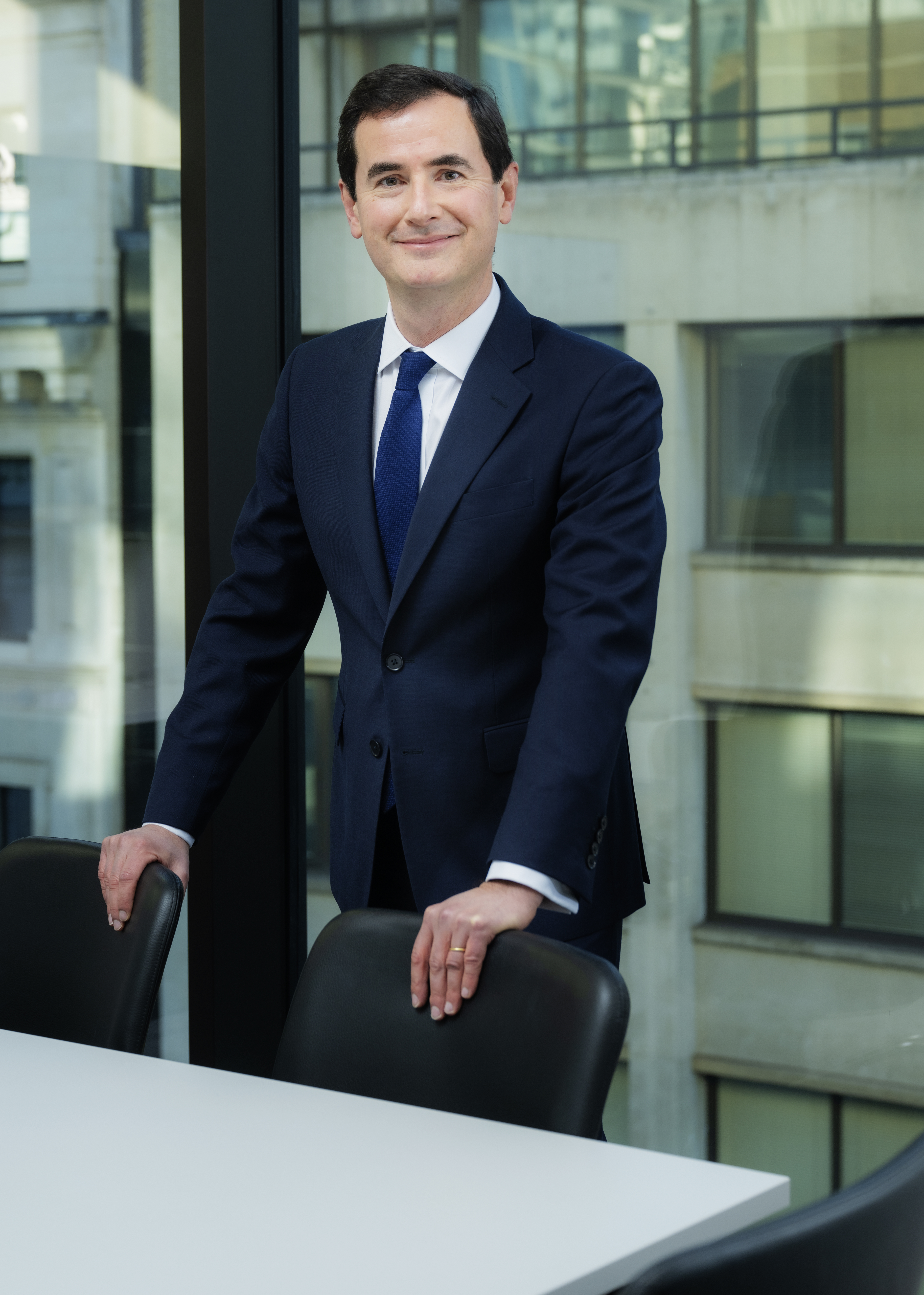By Frédéric Lejoint.
Philippe d'Orgeval joined Amundi in 2020 and brings with him a wealth of experience in financial markets, including roles at Axa IM and Rothschild in France and the UK. Since September 2024, he has been deputy director of Group management. We recently had the opportunity to meet him at the Amundi World Investment Forum, organised by the fund manager in Paris.

What are your expectations for the macroeconomic environment before the end of the year?
Philippe d'Orgeval: "We expect growth to be below the historical trend, i.e. around 0.8% for Europe with inflation below the ECB target and 1.6% for the United States with inflation above 3%. This should result in two or three rate cuts by the Federal Reserve between now and the end of the year, while the ECB could cut its policy rate several more times to 1.5 to 1.75%."
Expectations for the Fed currently vary widely
P.O.: "There is clearly polarisation, especially on how tariffs will affect the US economy. At the very least, we think the 10% customs duty will apply to all, with an average rate that should be 15% for all imports. Certain elements in the leading indicators (soft data) indicate that US consumers are becoming more cautious and are anticipating a rise in inflation. At the moment, the final indicators (hard data) do not yet show the full impact of tariffs, but we believe they will in the coming weeks, through economic data and operating margins. The Fed will then be forced to intervene.
What are the main risk factors currently affecting the markets?
P.O.: "The first is a resurgence of trade tensions when the moratorium ends. This would be a very negative scenario if negotiations harden or are not concluded, with an even greater impact on growth and a Fed that will have to cut its interest rates even more aggressively. The second is a major geopolitical risk, which is currently not extreme despite the tensions between Israel and Iran and the risks hanging over the Strait of Hormuz."
Aren't you worried about the derailing budget in the United States?
P.O.: "The US tax bill is expected to impact less affluent consumers and healthcare spending. This is another factor that makes us expect the Fed to be more accommodative in the coming months. However, this fiscal uncertainty is not limited to the United States and also affects several European countries. We are quite cautious on the long side of the yield curve, especially for 30-year maturities. At the same time, we prefer 5-year issues in Europe and the US, which should be more affected by interest rate cuts.
You don't expect US 10-year yields to rise above 5%, do you?
P.O.: "No, I think if we reach this level, there will be many forces at work, both in the authorities and investors. The US central bank will intervene and a 5% interest rate is also a level that will push many investors back to 10-year debt."
How have you adjusted your allocations after this volatile first half?
P.O.: "The violence of the tariff negotiations and the paradigm shift at the German level were big surprises. Given the frequent interruptions in our scenarios, we were forced not to react too immediately to what happened and to pay even more attention to proper risk diversification by increasing hedging in certain parts of the market. We also strengthened our geopolitical analysis capabilities, with the creation of a series of geopolitical sentiment indices at the Amundi Institute. Based on information collected in the markets, they provide us with additional analysis, which is then used by our management teams."
How are you currently positioned in the market?
P.O.: "Against the backdrop of no recession and continued earnings growth, we remain mildly positive on equities. We took a more balanced approach to the US and an overweight position in Europe, with greater exposure to small- and mid-caps. We also have a positive view of emerging countries, especially India."
And what about bonds?
P.O.: "We remain positive on investment grade corporate bonds, with very limited exposure to high yield bonds. Again, we prefer European assets, and in particular issues from the financial sector. In currency markets, we remain cautious on the outlook for the US currency, while the euro is likely to rise further towards $1.2. Finally, we maintain our positions in gold, as diversification and protection against a backdrop of continued high uncertainty."
What are the key themes for the markets in the medium term?
P.O.: "Demographics will continue to play a major role in our allocation in the medium term and will create a difference between developed and emerging countries. Climate also remains an important factor to consider, especially when it comes to how companies can adapt to the increase in physical risks and their impact on profitability."
How is AI affecting your current portfolio management?
P.O.: "We have included this impact in our Capital Market Assumptions, which we use to guide our long-term asset allocations. As for the management itself, we are in the process of developing a tool to track the manager's decisions, in particular to determine whether he is inclined to sell too early or too late. This tool has attracted some interest from our managers as it allows them to see the unconscious biases they may have when constructing their portfolios."



